

5 Exercises to Get Your Creativity Unstuck. Have you hit a creative roadblock?
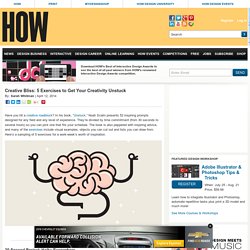
In his book, “Unstuck,” Noah Scalin presents 52 inspiring prompts designed for any field and any level of experience. They’re divided by time commitment (from 30 seconds to several hours) so you can pick one that fits your schedule. The book is also peppered with inspiring advice, and many of the exercises include visual examples, objects you can cut out and lists you can draw from. Business Origami: Learning, Empathizing, and Building with Users User Experience Magazine. Design requires empathy and a deep understanding of users’ workflows and mental models, which is usually accomplished through user research.
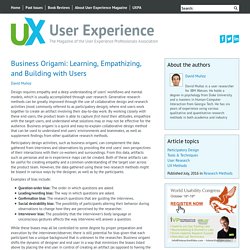
Generative research methods can be greatly improved through the use of collaborative design and research activities (most commonly referred to as participatory design), where end users work together to create an artifact involving their day-to-day work. By working closely with these end users, the product team is able to capture first-hand their attitudes, empathize with the target users, and understand what solutions may or may not be effective for the audience. Business origami is a quick and easy-to-explain collaborative design method that can be used to understand end users’ environments and teammates, as well as supplement findings from other qualitative research methods.
Examples of bias include: To Solve Major UX Problems, Try A Swarm Session. If you've ever gotten stuck on a design problem and couldn't for the life of you figure out how to solve it, consider holding a swarm session.
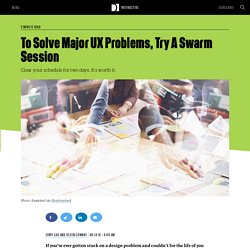
That's how Sumo Logic, a Bay Area-based analytics company with more than 250 employees and $161 million in venture capital funding, works through major product development challenges. Also called a "UX Palooza," a swarm is just what it sounds like: mass movement around a single problem. "The swarm is not a blue skies session; it’s more like a war room," says Sumo Logic design director Daniel Castro. "We gather everyone together, regardless of what project folks are working on, and put them on task to solve a certain thing. By focusing intently as a team, we can move projects forward and overcome obstacles faster than scattered one-hour sessions. " Every month, people on the UX team clear their calendar for two to five days to focus on a specific problem that will help move a larger project forward. The goal? Week 2: Research + Empathy — Notes from the Edge of Design. Week 2: Research + Empathy The 4-Week Guide for Digital Innovation Hey gang, welcome back.
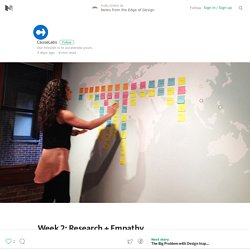
Hopefully by now you’re really powering with your team and starting to feel the momentum of the process. The 4-Week Guide for Digital Innovation — Notes from the Edge of Design. 3 Things to Do Before Week 1 Before we officially get things started next week, there’s a little bit of homework to do.
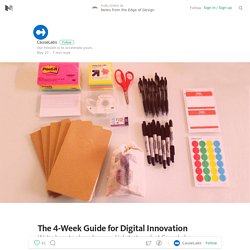
To get ready, you’ll need to do these three things: 1. Draft a Problem Statement2. Form a Team3. 1. A Framework For Brainstorming Products. Brainstorming is notorious for being unstructured and often unactionable.
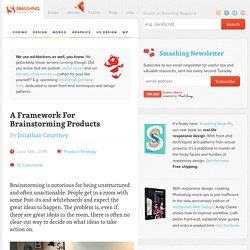
People get in a room with some Post-its and whiteboards and expect the great ideas to happen. The problem is, even if there are great ideas in the room, there is often no clear-cut way to decide on what ideas to take action on. Birth Of Applied User Story Mapping Link About a year ago, I and my colleague Michael (founding partner at AJ&Smart) were sitting in a masterclass run by the fantastic Adrian Howard on the subject of feature prioritization in agile development. More specifically, we were asking how we could decide which feature comes next and when it should be released. It was perfect. Supplies You’ll Need Link. Design Kit. Design Kit. How Brainstorming Questions, Not Ideas, Sparks Creativity. Brainstorming has developed a fraught reputation, perhaps deservedly so.
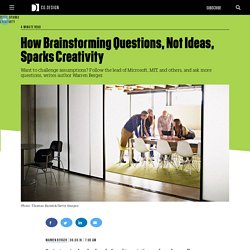
When groups of people are thrown together and expected to come up with original ideas, there is often too much pressure to be creative—resulting in ideas that are anything but. But what if brainstorms were designed to generate questions, not ideas? It’s an approach that’s being touted these days by a number of advocates, myself included. And while it may seem counterintuitive (Who needs questions? We need answers!) The latest proponent of this approach is the author and business consultant Matthew E. Others use a different name for similar versions of question-generation exercises. Whatever label it goes by, the question is: How does it work? Over the past year, as I’ve conducted question-generation sessions with clients ranging from small startups to major pharmaceutical companies such as Pfizer, I’ve had a chance to observe how the process is similar to, and different from, conventional brainstorming. 1. 2. 3. 4.
The Four-hour Product Definition Workshop. Here’s the outline, in question form: 1.
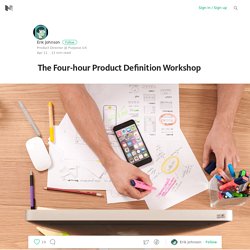
What are we trying to accomplish? (~30 mins) 2. Who will use this? 3. 4. 5. “Wait! Doing Design Sprint — Day 2 — Meatball IO. We quickly got in the workshop — the lightning demo.
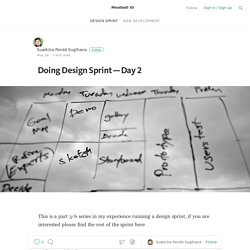
As for homework yesterday, the team went back and look at how other people have solved similar kind of problem. It is encouraged to look outside of the industry. Each person did about 2–3 demos for 3 minutes each. This time, the timer was more visible and we are a little more strict about our timebox. I find this session to be very interesting with lots of healthy and insightful discussions. With 8 people in the team, we got about 20+ demo in under 2 hours. UX Designers Must Think Physical □ — Prototyping: From UX to Front End. The Framework for Brainstorming Anything — AJ&Smart Stories. The Framework for Brainstorming Anything A systematic approach to ideating on products, features, services or anything really.
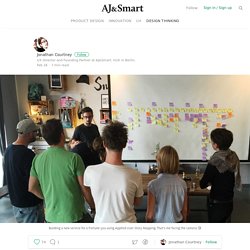
About a year ago myself and my colleague Michael (founding partner at AJ&Smart) were sitting in a masterclass, run by the fantastic Adrian Howard, on the subject of feature prioritisation in agile development. More specifically: how can we decide which feature comes next and when should it be released? Going through the exercises in the class something clicked with us: This quite dry, systematic approach could an interesting way to structure our Product Discovery workshops.